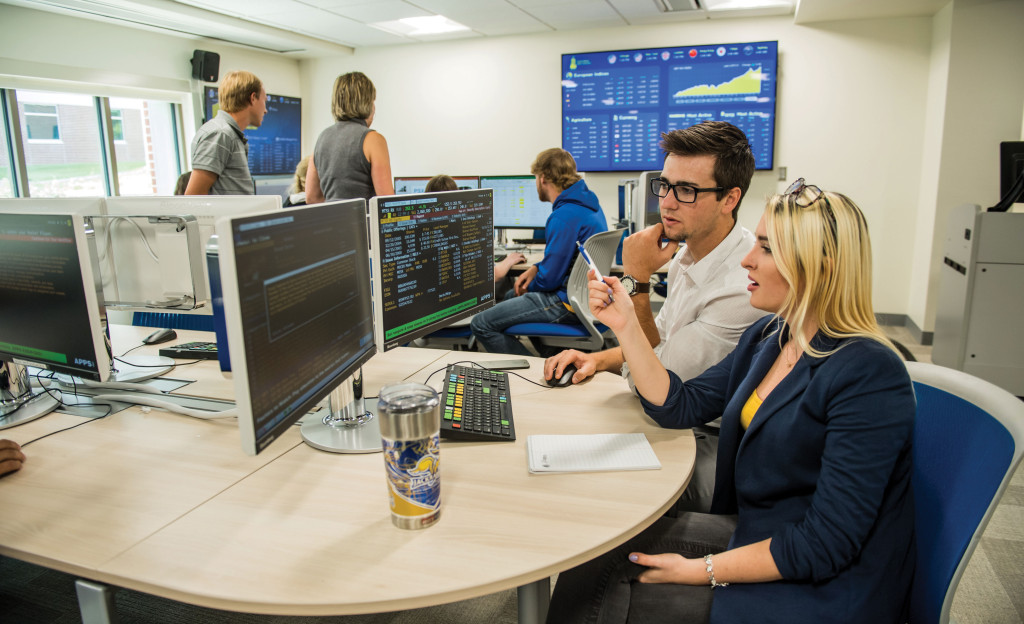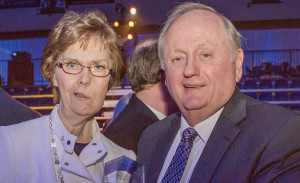Founding the Ness School of Management and Economics was an event nearly a century in the making for South Dakota State University.
Present-day programs have come a long way from their roots due largely to ever-transforming economic and business practices. These changes have forced near continual evolution of facilities, course offerings and faculty expectations-—leading to the formation of a business school on the Brookings campus.
“This has been an evolution of almost 100 years,†said Eluned Jones, the school’s founding director. “We started out in 1924 as a farm economics department. As the state and region’s GDP has changed from farm-based to food-based fuel with ethanol, the I-29 and I-90 corridor, more manufacturing and processing and the growth of South Dakota as a center for banking and investment—all of these have informed what we’re teaching, who we’re teaching and what knowledge and skills are in demand.â€
Starting this fall, SDSU’s fourth school will welcome students pursuing a top-tier business education.
Approved in April’s South Dakota Board of Regents meeting, the Ness School of Management and Economics officially opened July 1. Located in Harding Hall, the school offers degrees in agricultural business, agricultural and resource economics, business economics, economics and entrepreneurial studies along with 10 minor courses of study.
In Jones’ seven years at SDSU, she has seen the addition of the First Dakota National Bank e-Trading Lab and formation of the student management investment fund. Both tools serve to benefit the training of students and distinguish Jackrabbits from their counterparts.
“From my perspective, the school is a game changer for our students,†Jones said. “It’s a different game changer from the trading lab (an addition to Harding Hall that allows students to learn and practice with real-time market changes), but it’s a game changer that is recognized and has the potential to be a great brand image for the students.â€
Not all undertakings are seamless from the start, but Jones is relying on a concept she learned during her time at Texas A&M University.
“It’s the idea that you can’t be afraid to try something new and accept the fact that it might not work out,†Jones said. “Maybe it’s not going to work out now, it might be something we can do later, but if you wait, the opportunity is gone.â€
Behind its motivated director, the school is drawing closer to accreditation by the Association to Advance Collegiate Schools of Business, something Jones admits would be a big step forward.
Becoming an accredited school of business is a long-term investment. SDSU asked for permission to seek accreditation almost seven years ago and is still in the process.
“Part of the reason it takes so long is that [the AACSB] doesn’t want this to be a Band-Aid and just fixing a problem and going through the process. They want to know there is continuous improvement already occurring and that you are evolving and changing, not accepting the status quo. There is an investment and it’s not a small investment or commitment of the people to be engaged with that.â€
Many people have had a hand in getting the school to its current place. Two individuals who’ve given more resources than most are the school’s namesakes—Larry and Diane Ness. Larry ’69 and Diane ’71 Ness were named the philanthropic family of the year by the SDSU Foundation in 2015.
“In Diane and Larry’s case, they have a real dedication to the education of students,†Jones said. “They’ve used their education to make an impact on their community and South Dakota as a whole by giving back across the board. They provide funding to many schools, secondary education and tertiary education, so we’re part of the beneficiaries of that, and it does make a difference.â€
Generosity from the Ness’, Jeff Broin and Janet Wade have made a profound impact on the future of business education at SDSU, but the impact of their contributions also extends back in time, reflecting on anyone who has earned a business or economics degree from SDSU and was part of the journey to get the school to where it is today.
“What it means to alumni–—their degrees come from the same entity,†Jones said. “If they’re now to put down where their degree comes from, parenthetically it comes from the Ness School of Management and Economics because they won’t find the department of economics.â€
While Jones was instrumental in transitioning and reforming business and economics programs and practices at SDSU and now has a named school to show for it, she knows there’s hardly time to relax and celebrate this achievement.
“My reason for coming up here was to do this,†she said. “There wasn’t any reason why it couldn’t work when you had all of those in one entity, but it’s one step along the way—we’re not finished yet. We still have to achieve accreditation, but we’re a significant step forward with the Ness School.â€
– Landon Dierks







